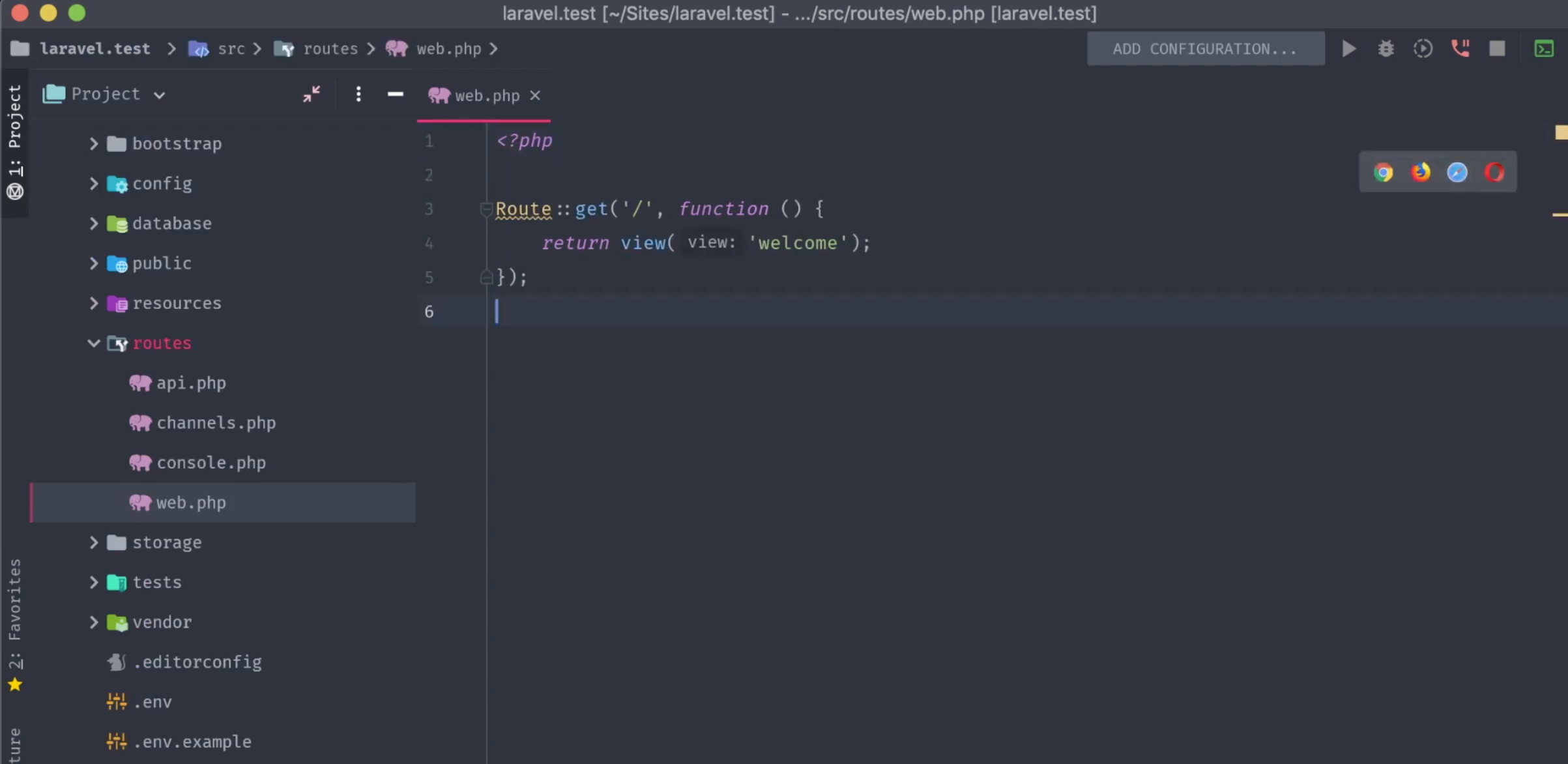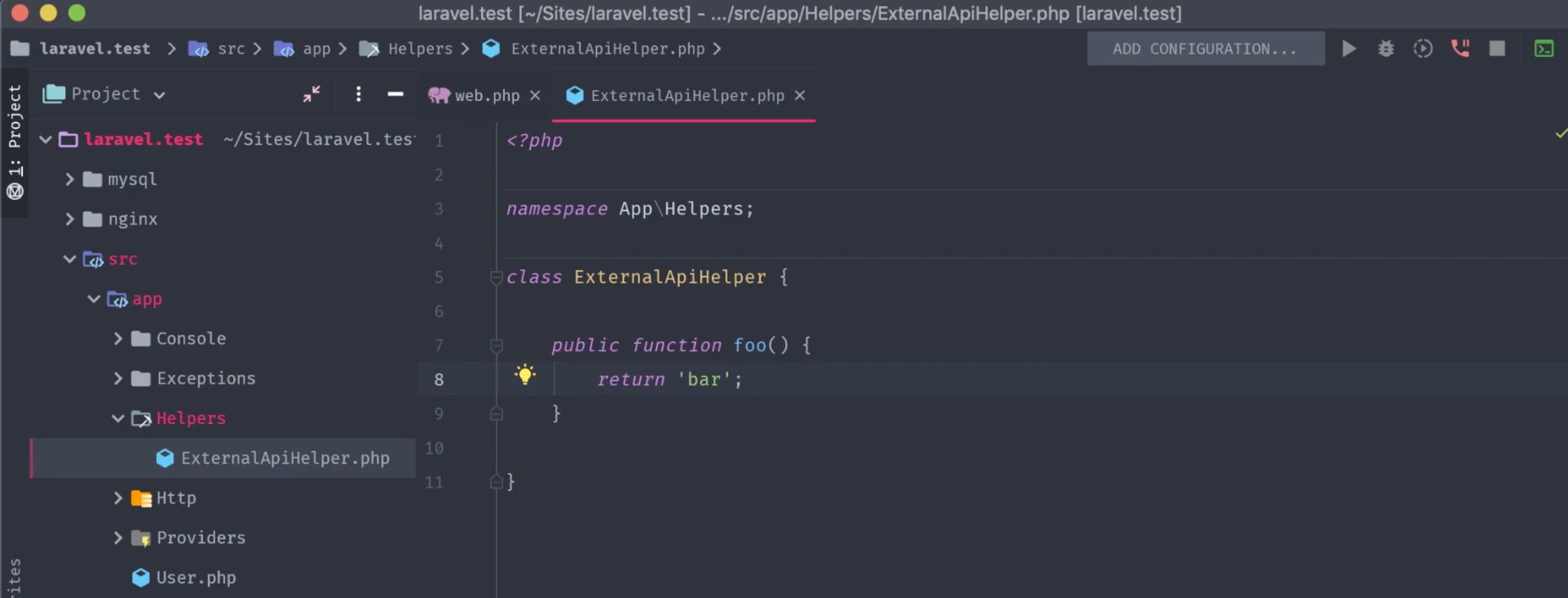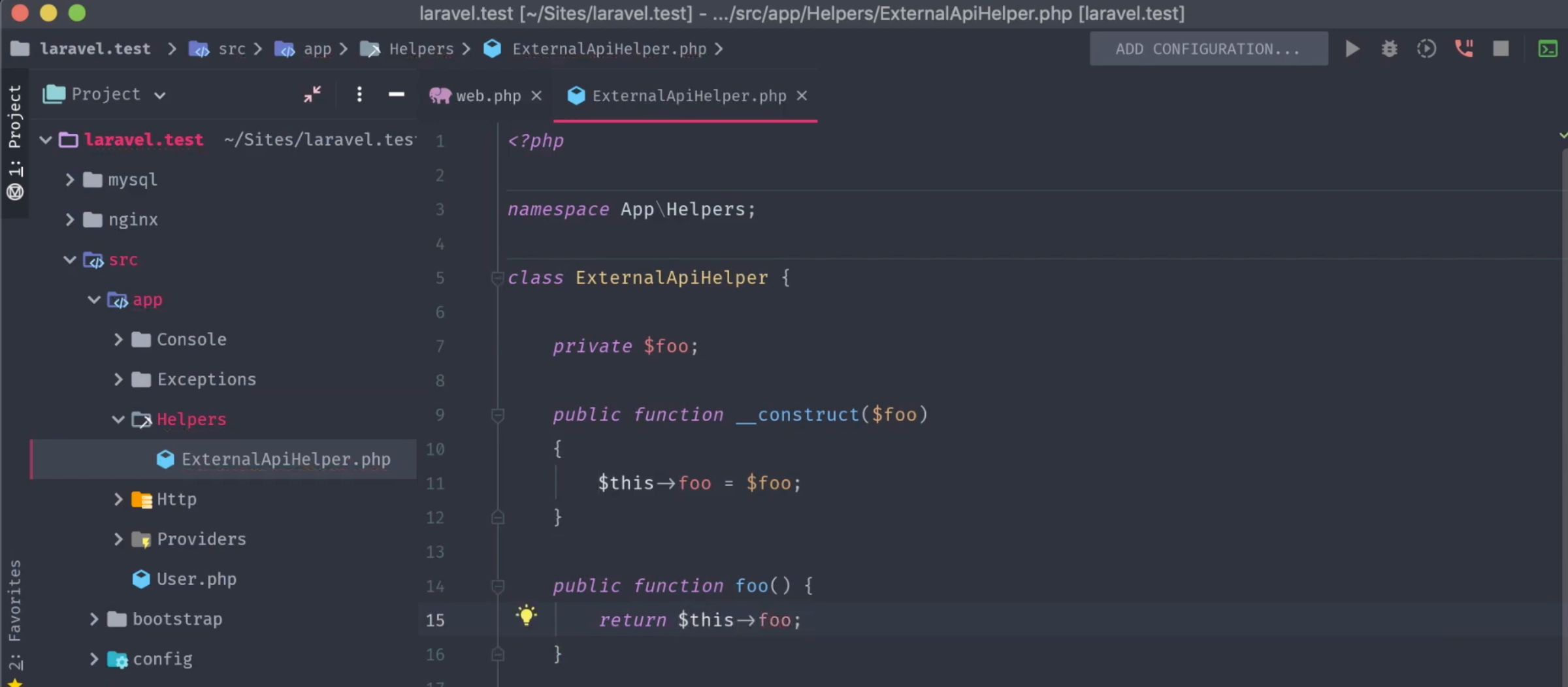A while back, someone pointed out that in my Laravel package tutorial, my use of a singleton method was completely unnecessary. Truth be told, up until this point I really hadn’t looked into or thought about the bind or singleton methods that I’ve seen in the source code of other packages. I decided to do some digging and take time learning how, and when, to use those methods in my own applications.
Feel like watching an explanation instead of reading? Check out the video of this tutorial instead.
If we take a look at the Laravel documentation, binds are registered using the bind() method. The first argument passed in is a class name, followed by a closure that returns an instantiated instance of that class object. What we’re telling Laravel is “Keep this class handy, and whenever I reference it through the app service provider, I want to get back an initialized class object with any configurations or arguments that I pass in here”.
$this->app->bind('HelpSpot\API', function ($app) { return new HelpSpot\API($app->make('HttpClient'));});Creating our example class
In a brand new Laravel project, let’s navigate to the web.php route file and remove the default view return. Instead of creating a controller, I’m just going to do these demonstrations right in the route’s closure.

To start our little example, let’s create a class called ExternalApiHelper.php under a Helpers directory, in our app folder. We can assume that in a production environment, this class might be a way to expose multiple methods for interacting with a third-party service or some other external API.
We’ll add the proper namespace, class name, and initialize it with a single method called foo(), that returns a string with a value of bar.

If we navigate back to our web.php route file, we can call this class like any typical PHP method. First we initialize it with the new keyword, and then return the value of the method foo. Like this:
use App\Helpers\ExternalApiHelper; $apiHelper = new ExternalApiHelper();return $apiHelper->foo();Navigating to our project in the browser, we should see that ‘bar’ is returned just as expected.
Let’s add a bit more complexity to this ExternalApiHelper class. We’ll add in a private variable to store the value of foo, and set that value in a constructor. Instead of hard coding in the return value of the foo() method, we’ll return whatever is set in that variable.

If we modify the line of code in the web.php route file to match the new class structure, we can change what the browser returns:
$apiHelper = new ExternalApiHelper('Hello, world!');Now, this definitely works and isn’t that complicated. But if you begin dealing with larger classes and more complex code structures, it can get pretty messy. My goal here is to get a very Laravel-like one liner, that might look something like:
return ExternalApiHelper::foo('Hello, world!');The service provider
If we open up the AppServiceProvider.php file, we’re presented with two methods by default: register() and boot(). We’re going to be focusing on the first one, as any binds or registrations that need to be made to our service container, have to be set in here.
Binding is easily done by calling the bind method, through the app’s service container:
$this->app->bind()As we saw earlier, the first argument will be our class name (which for organization’s sake we’re pulling through with the static class keyword). Followed by that is our closure, which returns a new instance of our ExternalApiHelper class initialized with a string of our choosing:
$this->app->bind(ExternalApiHelper::class, function() { return new ExternalApiHelper('Hello, app!');});Back on our web.php route file, we can replace the two lines of code in our closure with a single line now. The app method used is a short call to our application’s service provider, inside of which we’ll pass in the class name that we bound. Since this returns an initialized object of our class, we can then chain the foo method right to the end of it and return our string as expected:

A little earlier we talked about wanting to use a Laravel-like static one liner to call this method instead, and there’s a pretty simple way to accomplish this. Let’s head back to our ExternalApiHelper class and add in a new static method called bar().
This method will just simply return the call that we’re making in the web.php route file:
public static function bar(){ return app(ExternalApiHelper::class)->foo();}If we go back to our web route file and replace the line with ExternalApiHelper::bar(), save, and refresh our browser, we get back the same value that we have been (Hello, app!), only in a cleaner, shorter line.
Let’s ramp it up and add a bit more complexity to this. We’ll create another static method called setFoo in our ExternalApiHelper class, with a single parameter called $foo. We’ll get our class object by calling the app method again, but we’re going to set the private $foo variable using the argument passed in when this method is called. Afterwards, we’ll just return the whole object:
public static function setFoo($foo){ $apiHelper = app(ExternalApiHelper::class); $apiHelper->foo = $foo; return $apiHelper;}Back on our web.php route file, we can directly call that setFoo method without having to initialize the class first.
The service provider will do all of the work for us, then we pass in the string that we want, and call the foo method on that object. We could honestly even shorten this down and chain foo() directly on the end of the first line if we wanted to:

The main difference between bind and singleton
This is a perfect time to look at the difference between these two methods. Let’s remove the return on the code example above, and call a second ExternalApiHelper::setFoo() method, passing in a different string than the first.
We’ll try and return both of the object’s values, separated out by a dash:
$externalApi = ExternalApiHelper::setFoo('Hello, foo!');$externalApiAgain = ExternalApiHelper::setFoo('Hello, foo again!'); return $externalApi->foo() . ' - ' . $externalApiAgain->foo();Refreshing our browser window, we can see the two values that we set and want displayed, “Hello, foo! — Hello, foo again!”. Each variable that we created has its own ExternalApiHelper class object, and is storing its own foo string.
If we navigate back to AppServiceProvider.php and change the bind call to a singleton call, keeping everything else the same, and refresh the browser, we see something a little different:
“Hello, foo again! — Hello, foo again!”
The reason behind this is the singleton pattern in PHP:
The singleton pattern is used to restrict the instantiation of a class to a single object, which can be useful when only one object is required across the system. … The first call will instantiate the object while any subsequent will only return the instantiated object.
What does this mean for us? When we call ExternalApiHelper::setFoo() for the second time, instead of creating a new object and assigning it to our variable, it’s referencing the object that was created in the call before it. We we set a new string using that method, we’re setting the string on the same object, just stored in two separate variables.
Calling the foo() method on those objects returns the same value because the reference is to the same class object.
Why would we use singleton?
A perfect use case for this pattern is in something like an application logger.
Let’s say that we have a class that gets data passed into it, and then sends that data out to a third-party service or stores it locally on the filesystem. Regardless of the intention, after the logger has been initialized for the first time, we wouldn’t want to (or need to) reference more than one instance of that class.
If during your code’s execution Logger is needed 5 different times, not using the singleton pattern would result in calling 5 different instances of that Logger class object. Unless you’re destroying them after each successful event, that just wastes hardware memory and can lead to messier code overall.
Using a singleton ensures that only one object of that class is initialized at a time, throughout our application’s execution.
Another great example would be for a database. We wouldn’t need to initialize a database class object with login credentials multiple times through our applications execution when we can just reference a single object that’ll handle our calls for us.
I hope you’ve learned as much from this as I did researching it and putting it together! Hopefully you’re confident enough to start using bind() and singleton() service provider methods in your own Laravel applications.
As always, if you have any questions please don’t hesitate to reach out to me on my Twitter!
My Newsletter
Read sampleSubscribe using the form below and about 1-2 times a month you'll receive an email containing helpful hints, new packages, and interesting articles I've found on PHP, JavaScript, Docker and more.
